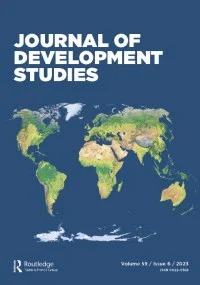Revisiting the Determinants of Non-farm Labour Income in the Peruvian Andes: The Role of Intra-Seasonal Climate Variability and Widespread Family Networks
| Year | : | 2023 |
|---|---|---|
| Author/s | : | Carmen Ponce |
| Area/s | : | Rural development and agriculture |
Ponce, C. (2023). Revisiting the Determinants of Non-farm Labour Income in the Peruvian Andes: The Role of Intra-Seasonal Climate Variability and Widespread Family Networks, The Journal of Development Studies.
As previous literature shows, non-farm income represents up to 50 per cent of rural household income in developing countries. Mostly due to a lack of representative information on climate and family networks, two key factors have been excluded in previous studies on income diversification: (i) the role of intra-seasonal climate variability (affected by climate change), and (ii) the role of family networks located in distant areas (increasingly important given population mobility due to internal conflicts and improved roads and communications). This study analyses the role of these factors on non-farm working hours and non-farm income shares in the Peruvian Andes. Controlling for other assets and environmental conditions, the study finds that households with distant, strong networks diversify more into non-farm activities. Increases in intra-seasonal climate variability (measured by temperature range during the main crop growing season) have heterogeneous effects across subregions. While we find no direct effect among Southern households (more isolated and indigenous), households in the cooler areas of the Central and Northern Andes (below 13 °C during the crop growing season) tend to increase non-farm income as climate variability increases. The study suggests that distant, strong ties facilitate non-farm opportunities for households facing increasing temperature variability in Central and Southern areas.






